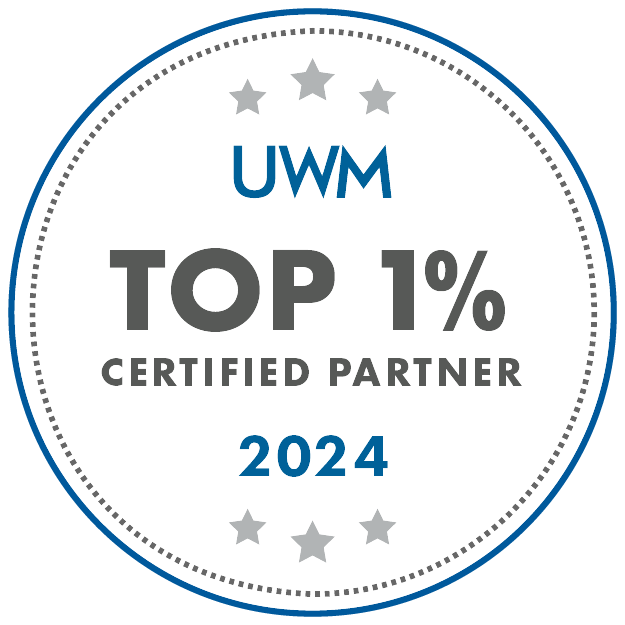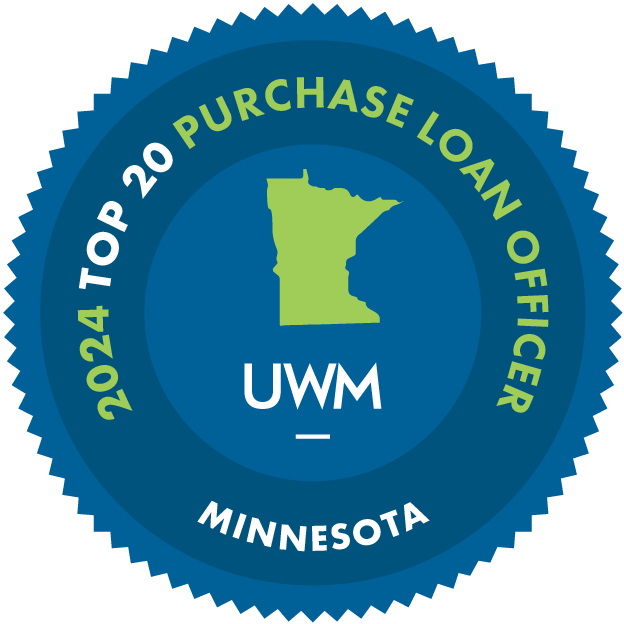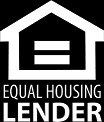Helpful Homebuyer Blog

There are a lot of myths and misconceptions in the personal finance world, and some of them could hold you back — from saving money and improving your credit score to qualifying for loans. No matter what your next financial goal may be, having a solid strategy is integral to getting you there safer and faster. With that being said, let’s take a look at four of the most common yet easily overlooked money myths and set the record straight. Myth 1: Savings are only what’s in your bank account. For loan applications, your liquid assets are your savings, and personal bank accounts are only a part of it — 401(k)s, brokerage accounts, IRAs and more are also considered savings. Once you tally up all of your liquid assets, you might be surprised by the amount! Myth 2: Investing isn’t worth it unless it’s a large amount. Small amounts of money can be a smart investment, especially if they have plenty of time to gain interest. In fact, investing meager amounts of money consistently over time can make a big difference in your financial future. Myth 3: Debt is always bad for credit. Only debts you don’t pay on time or that take up too much of your income hurt your credit score. If you keep your balances in check and always pay on time, debt can actually help your credit score quite a bit — and even make it easier to qualify for loans, too. Myth 4: Small balances can raise your credit score. Constantly carrying a balance won’t improve your credit score, but paying it off regularly will. You’re charged interest for remaining balances, so it won’t benefit you. Want to learn more about how your financial choices could impact your journey to buy a home? Reach out today.

Adjustable-rate mortgages (ARMs) are a hot topic for a reason: Not only can they help borrowers avoid committing to higher interest rates, but initial rates for ARMs have also remained lower than fixed-rate mortgages. For example, these were the average rates in late May: 30-year fixed-rate mortgage: 5.1% 5/1 ARM: 4.2% Seems like a no-brainer, right? Not quite — important details are hidden behind these numbers. Here’s what you need to know about ARMs for financing or refinancing your home: 1. The rate is temporary . As per the name, ARM interest rates are not meant to last. This means the aforementioned 5/1 ARM would only offer that 4.2% interest rate for the first five years; rates adjust yearly thereafter. The higher current rates are, the more people who believe these adjustments will provide lower rates later — but their rate could increase instead, and there's no way to know for certain when you sign. 2. Rate adjustments are capped . Adjustments have a maximum potential increase or decrease each period. The rate cap is important to make note of when reviewing loan terms. That being said, it’s possible avoid steep rate hikes using strategies like refinancing into a fixed-rate mortgage. However, exit plans can come with caveats: Refinancing, for example, could mean losing progress in your amortization schedule . 3. There are many different ARM options . The first number represents the fixed-rate period (e.g., five, seven or 10 years) while the second refers to adjustments (e.g., every year or six months). This means a five-year ARM can be either a 5/1 ARM or a 5/6 ARM. The variety creates differing risk (and reward) levels; shorter fixed-rate and adjustment periods can be more volatile but can offer lower interest rates. Want to find the right mortgage for you? Reach out to discover your best options.

Buying a house can be challenging, but the work doesn’t stop once you sign those closing papers. As a new homeowner, there are a number of tasks you’ll want to prioritize to ensure your home is safe, secure and primed for success before moving in. Here are seven tasks to put on your post-closing to-do list: Locate the breaker box and water shut-off valves . Knowing where and how to shut your water and electricity off can be critical in emergencies like a burst pipe. Change the locks . There’s always a chance copies of the keys you received are floating around somewhere. A locksmith can install brand-new locks on all entryways before you move in. Reset the garage door opener . Similarly, the garage door opener will need resetting. You might want to have the manual lock changed out as well. Install or replace batteries in carbon monoxide and smoke detectors . Make sure these safety devices are operating at move-in — though hopefully you’ll never need them. Meet the neighbors . Get the names and contact info of your next-door neighbors. You never know when members of your new community could lend a helping hand (or vice versa), so the sooner you introduce yourself, the better. Check and replace air filters . For optimal performance, HVAC systems need new filters about every three months. Check the unit and note the correct size and brand as soon as possible. Clear the gutters . Clogged gutters won't drain properly and can potentially damage your roof. It’s a good idea to check on your gutters seasonally after moving in. Need help covering home repairs or buying your new home? Get in touch to discover your options today.

Mortgage rates have risen since the beginning of the year. As home prices still remain high and economic uncertainty creeps in, you might be considering pausing your home search. Is that the right move, though? The truth is, no homebuying journey is the same — and that’s exactly why the potential costs and savings of waiting are best determined on an individual basis. Unsure whether to hold off or not? Here are some helpful points to help guide your decision making: Mortgage rates were at unusual, record lows. In the ‘90s, for example, interest rates were between 8% and 10%. They could always go down, but it’s important to keep in mind that the low rates we saw until this year were a result of pandemic policies, so it’s unclear when we could see rates like that again. Higher rates can bring some market relief. Higher rates can help reduce competition, which could help ease buyer pressures like bidding wars. They can also help keep homes more affordable by slowing price growth. Real estate trends are often location-specific. Most of the market trends in headlines are national averages. In reality, your market of interest might not behave anything like this (and can differ even by neighborhood), so it’s always important to check in with your agent about local real estate market conditions. Personal finance, goals and needs matter most. Timing the market isn't as helpful as it might sound if it isn’t in line with your economic situation and accommodation needs. Are you paying for rent while you wait? Factors like this can cut heavily into the potential savings from waiting to buy. Want to get the full scoop on your best mortgage loan options? Reach out today for personalized, expert help.

Knowing whether the price is right for a property you’re interested in is vital to avoid problems further down the road. It can be easy to miss though, especially in a hot market. With stiff competition, an overpriced listing can still get plenty of bids as if nothing is amiss — the downsides of overpaying often come later on, like during the appraisal process or when reselling. Luckily, there are a few easy ways anyone can look out for a potentially overpriced home. Here are five signs to look for during your search: 1. It’s been on the market awhile . If a home was listed several weeks or months ago, it could mean that something about the property made other buyers avoid offering. If the reason isn’t obvious, asking for your agent’s input or taking a thorough tour are both good ideas. 2. The price doesn’t compare to neighboring offers . You can ask your agent to do a comparative market analysis (CMA) on a listing. This will provide an expert check on how the price compares to similar properties in the area. 3. It has recent (needless) upgrades . Making essential repairs (like new roofing) before selling is common practice. But not all upgrades add value, and some sellers use low-effort renovations (e.g., new wallpaper) in order to justify a much higher price. 4. The price per square foot is high . This number can be especially helpful if there are not many comparable listings nearby. However, keep in mind any valuable property features that might warrant a higher price per square foot. 5. It has a shifty market history . Has it been bought and sold repeatedly in the past few years? Did pending sales fall through? You may want to ask your agent about it. Ready to start your home search? Get in touch to set your home financing journey up for success.
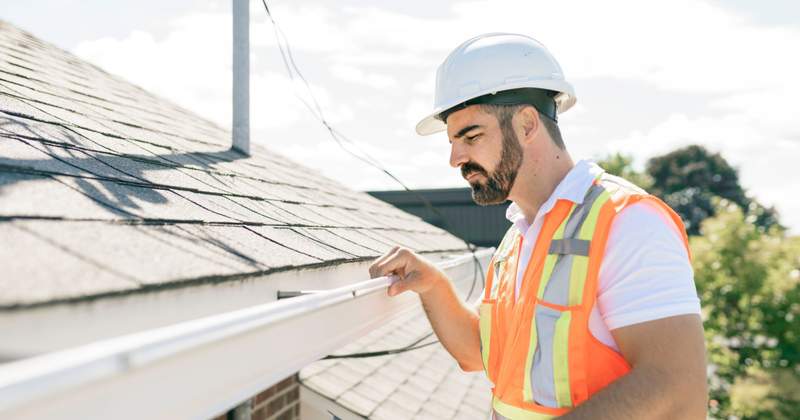
When you apply for a mortgage, lenders assess two things: your risk as a borrower and any risks associated with the property. While you can influence the former through having a good credit score and low debt-to-income ratio, the latter requires a careful eye when shopping for your home. Want to keep your financing opportunities open before you buy? Watching out for these potential risks during your home search can help. Why are property risks important to look for? Certain home features are financially risky, and too much risk makes it harder to get approved for financing. This is true for conventional mortgages and even more so for FHA loans, which tend to have more rigid property requirements. Here are four concerns that can cause setbacks, even for conventional financing: An Old Roof : Roofing must have at least two years of functionality remaining to qualify for most mortgages. If the roof is too old, it’s worth asking the seller if they will update it. Structural Issues : Homes need to be structurally sound to qualify for a conventional mortgage. Structural issues can often be hard to spot, so a third-party home inspector can help you identify any potential concerns. Mold or Excessive Water Damage : Both are safety issues that can set your financing back. They’se are considered “adverse conditions” and will be noted on the appraisal. Uninsurability : If a home cannot be insured due to its vulnerability to wildfires, flooding or other environmental hazards, it will likely pose problems with financing as well. Interested in a home but not sure if it will qualify? Get in touch — together, we can find financing options that suit your needs.

Building your home from the ground up can be extremely rewarding. You get to have a lot more control over your property’s design and construction, and starting from scratch can be an adventurous passion project. But how can you finance both the property purchase and construction? Do you need one loan for the land and another for the house? Will a standard mortgage work? Here’s a quick rundown of your main options. What are construction loans? Construction loans can cover the cost of raw land, building permits, construction and other expected financial obligations between purchasing land and building a home. They typically include a completion time limit of 12 months, though buffer limits for both budget and construction time can vary. Most construction loans can be divided into two main categories: 1. One-Time Closing Loans Often called construction-to-permanent loans, these are actually two loans conveniently bundled into one closing appointment. You start with a construction loan, paying only interest throughout the building process. Once construction is complete, your balance converts into a mortgage, which you’ll pay back monthly just like any other conventional mortgage loan. There are various loan terms and rate types (adjustable or fixed) for one-time closing loans to fit your plans and needs. One of the most appealing benefits of a one-time closing loan is that the merged process can help decrease your closing costs. 2. Two-Time Closing Loans A two-time loan includes two loans with separate closings. This means you can potentially use separate loan options to seek out better interest rates, but you’ll have additional closing costs. Though the variety of options can be financially advantageous for some borrowers, others may find the process of qualifying and applying for two different loans difficult depending on their circumstances. Financing your dream home can feel complicated, but it doesn’t have to be. Get in touch today to discuss your options.
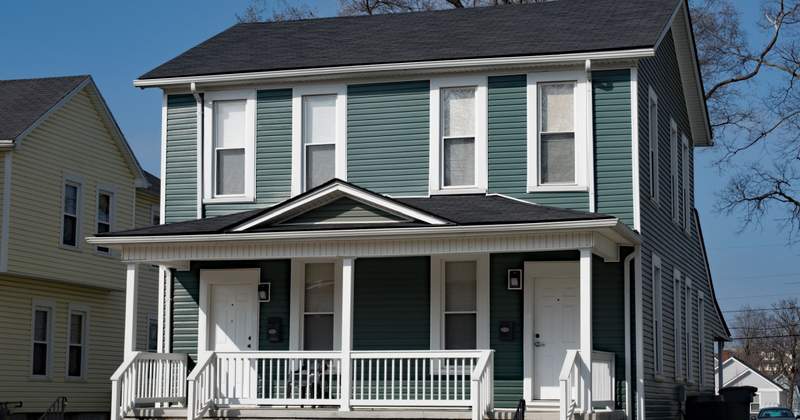
There are lots of creative ways to afford a home, but house hacking might be one of the most interesting on paper. Not only does this investment strategy have generations of practical use behind it, but digital advancements in the rental market have created new opportunities for those with extra space to offer. So what does house hacking entail, and is it worth it? If you’re looking for ways to make homeownership affordable, here’s what to know about house hacking. How does house hacking work? Traditional house hacking involves buying a multi-unit property (e.g., a duplex), occupying one unit and renting out the others. This practice can also apply to extra living spaces, like a spare room in a single-family home. What are the potential benefits? Rental income can help cover much of your mortgage and living expenses. Many also enjoy the less isolated living environment and will rent out units to loved ones for this reason. What are the biggest risks? Being a landlord comes with legal and financial responsibilities that homeownership doesn’t. Additionally, house hacking can carry financial risks if the owner cannot afford their mortgage payment without rental income. How can you house hack successfully? Familiarize yourself with obligations for short- or long-term rental owners (e.g., tenant screening) and protective measures like insurance policies. Try to establish a budget that you could afford single-handedly for at least a few months in case there are gaps in your supplemental income. How can you finance a house-hacking property? Residential loans are still an option so long as you reside full-time in a property with one to four units. Loan programs vary, so reach out if you’d like to discuss your options. With the right preparation, house hacking can provide savings and opportunities for homeowners. But this strategy isn’t for everyone — get in touch so we can find your best path to affordable homeownership.

